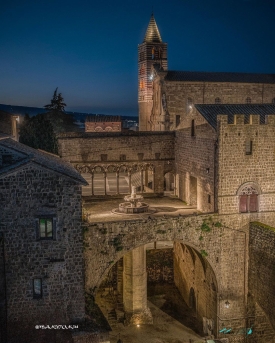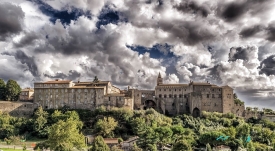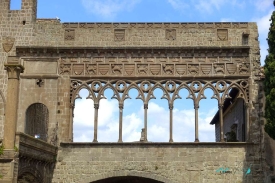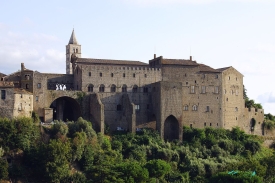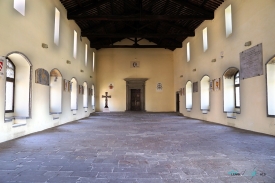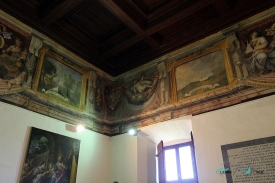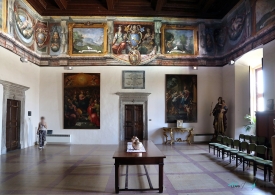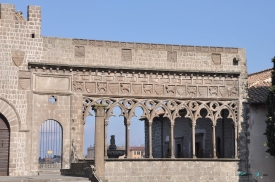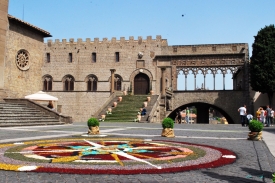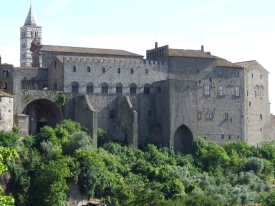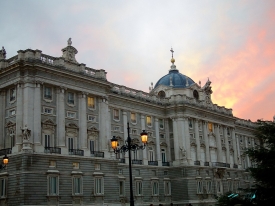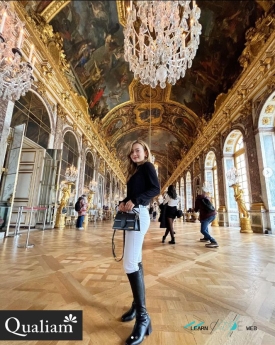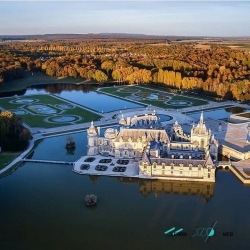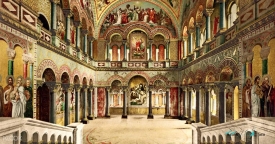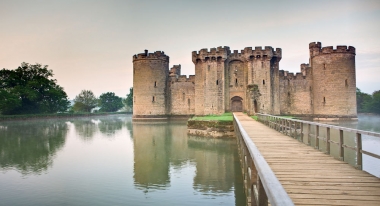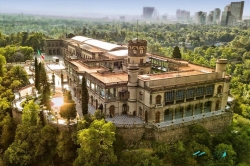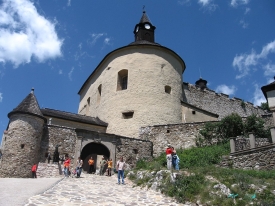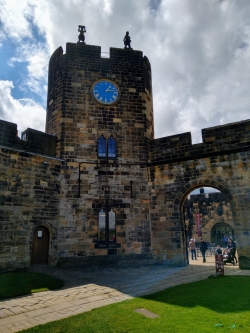ABOUT Palace of the Popes in Viterbo
If you are a travel enthusiast who loves exploring places rich in history, the Palace of the Popes in Viterbo is a must-visit. Alongside the Duomo, this monument is one of the most important in the city, housing centuries of history and impressive architecture within its walls.
The Papal Palace of Viterbo, commonly known as Palazzo dei Papi, was erected in its current form during the 13th century. The construction was expanded over the seat of the episcopal Curia of the city when Pope Alexander IV (1199-1261, pope from 1254) decided to transfer the seat of the pontifical Curia to Viterbo in 1257. This move was due to the hostility of the Roman people and nobles, led by Senator Brancaleone degli Andalò.
The expansion was supervised and directed by the Captain of the People, Raniero Gatti, a member of an influential local family. Under his management and with the consent of Pope Clement IV, a large audience hall was built, known today as the Aula del Conclave.
Another notable feature of the palace is the Loggia of the Blessings, better known as the Loggia of the Popes. This structure, characterized by elegant and harmonious architecture, was erected in 1267 by the will of the Captain of the People Andrea Gatti during the pontificate of Clement IV. The loggia served as a balcony from which the Pope would impart blessings to the people.
Today, you can visit the Palace of the Popes by heading to the Museum of Colle del Duomo in Viterbo. The palace is part of the monumental complex of Colle del Duomo and offers visitors an immersion into medieval history and architecture.
Among the most outstanding architectural elements is the Loggia of the Blessings. This loggia opens onto the square with a series of arches supported by slender columns, creating a visual play of seven pointed openings resting on six columns with trilobed arches. Above the arches runs an entablature decorated with civic, imperial, and papal symbols.
At the center of the loggia is a 15th-century fountain adorned with symbols of the Gatti family. The fountain features an upper basin crowned with spouts shaped like lion heads and topped in the center by a pinnacle.
Alexander IV (1254-1261): Resided permanently in Viterbo from 1257.
Urban IV (1261-1264): Divided his residence between Orvieto and Viterbo.
Clement IV (1265-1268): Spent most of his pontificate in Viterbo.
Gregory X (1271-1276): Although his stay in Viterbo was brief, his election took place after the conclave held in the palace.
Innocent V (1276): Stayed in Viterbo for about fifteen days after his election.
Adrian V (1276): Spent almost his entire short pontificate in the convent next to the Church of San Francesco alla Rocca.
John XXI (1276-1277): Habitual resident in Viterbo until his tragic death.
Nicholas III (1277-1280): Divided his time between Viterbo, Rome, and Soriano nel Cimino.
Martin IV (1281): The last pope of the "Viterbo period."
The Palace of the Popes in Viterbo is more than a monument; it's a journey to the heart of medieval history and the Catholic Church. Its walls have witnessed crucial events, from historic conclaves to the residence of influential popes. If you're looking for a destination that combines architectural beauty with a rich historical heritage, this palace is an essential stop on your itinerary through Italy.
Don't miss the opportunity to walk through its halls, admire the Loggia of the Blessings, and feel the atmosphere of a place where decisions that shaped the course of Western history were made. Viterbo awaits you with open arms and treasures yet to be discovered.
The Papal Palace of Viterbo, commonly known as Palazzo dei Papi, was erected in its current form during the 13th century. The construction was expanded over the seat of the episcopal Curia of the city when Pope Alexander IV (1199-1261, pope from 1254) decided to transfer the seat of the pontifical Curia to Viterbo in 1257. This move was due to the hostility of the Roman people and nobles, led by Senator Brancaleone degli Andalò.
The expansion was supervised and directed by the Captain of the People, Raniero Gatti, a member of an influential local family. Under his management and with the consent of Pope Clement IV, a large audience hall was built, known today as the Aula del Conclave.
The Aula del Conclave: Setting of the Longest Conclave in History
The Aula del Conclave is famous for hosting the first and longest conclave in the history of the Catholic Church. Between 1268 and 1271, over 1,006 days, cardinals gathered in this place to elect the successor of Clement IV. This prolonged process concluded with the election of Pope Gregory X.Another notable feature of the palace is the Loggia of the Blessings, better known as the Loggia of the Popes. This structure, characterized by elegant and harmonious architecture, was erected in 1267 by the will of the Captain of the People Andrea Gatti during the pontificate of Clement IV. The loggia served as a balcony from which the Pope would impart blessings to the people.
Notable Events at the Palace
The Palace of the Popes is significant not only for its architecture but also for the historical events that took place there. On May 11, 1277, the collapse of a newly built wing of the palace mortally wounded Pope John XXI, marking a tragic episode in the site's history.Today, you can visit the Palace of the Popes by heading to the Museum of Colle del Duomo in Viterbo. The palace is part of the monumental complex of Colle del Duomo and offers visitors an immersion into medieval history and architecture.
Architectural Details of the Palace
The palace is a massive construction that, on the side opposite the square, towers over the Valle di Faul with powerful buttresses. To the right of the building is the imposing Aula del Conclave, which faces the square with six bifore windows crowned by as many arrow slits. Access to this hall is from the square via a wide staircase, completed in 1267, leading to a portal with a round arch.Among the most outstanding architectural elements is the Loggia of the Blessings. This loggia opens onto the square with a series of arches supported by slender columns, creating a visual play of seven pointed openings resting on six columns with trilobed arches. Above the arches runs an entablature decorated with civic, imperial, and papal symbols.
At the center of the loggia is a 15th-century fountain adorned with symbols of the Gatti family. The fountain features an upper basin crowned with spouts shaped like lion heads and topped in the center by a pinnacle.
The Popes Who Resided in Viterbo
During the 13th century, Viterbo was the residence of several popes, becoming an important center for the Catholic Church at that time:Alexander IV (1254-1261): Resided permanently in Viterbo from 1257.
Urban IV (1261-1264): Divided his residence between Orvieto and Viterbo.
Clement IV (1265-1268): Spent most of his pontificate in Viterbo.
Gregory X (1271-1276): Although his stay in Viterbo was brief, his election took place after the conclave held in the palace.
Innocent V (1276): Stayed in Viterbo for about fifteen days after his election.
Adrian V (1276): Spent almost his entire short pontificate in the convent next to the Church of San Francesco alla Rocca.
John XXI (1276-1277): Habitual resident in Viterbo until his tragic death.
Nicholas III (1277-1280): Divided his time between Viterbo, Rome, and Soriano nel Cimino.
Martin IV (1281): The last pope of the "Viterbo period."
The End of the Papal Residence in Viterbo
Pope Martin IV, born Simon de Brion, was elected after a lengthy and troubled conclave that lasted six months. During this conclave, the Captain of the People of Viterbo, Annibaldo Annibaldi, intervened by arresting two cardinals and preventing the participation of the protodeacon cardinal Matteo Rubeo Orsini. Due to these interferences and the hostility of the Romans towards a French pope, Martin IV was crowned in Orvieto and decided to abandon Viterbo as the papal seat. From then on, the papal seat never returned to this city.The Palace of the Popes in Viterbo is more than a monument; it's a journey to the heart of medieval history and the Catholic Church. Its walls have witnessed crucial events, from historic conclaves to the residence of influential popes. If you're looking for a destination that combines architectural beauty with a rich historical heritage, this palace is an essential stop on your itinerary through Italy.
Don't miss the opportunity to walk through its halls, admire the Loggia of the Blessings, and feel the atmosphere of a place where decisions that shaped the course of Western history were made. Viterbo awaits you with open arms and treasures yet to be discovered.
The Best Pictures of Palace of the Popes in Viterbo
Videos of Palace of the Popes in Viterbo
![[4k] Italy Walking Tour](https://i1.ytimg.com/vi/zxY2RO_9X7g/mqdefault.jpg)






